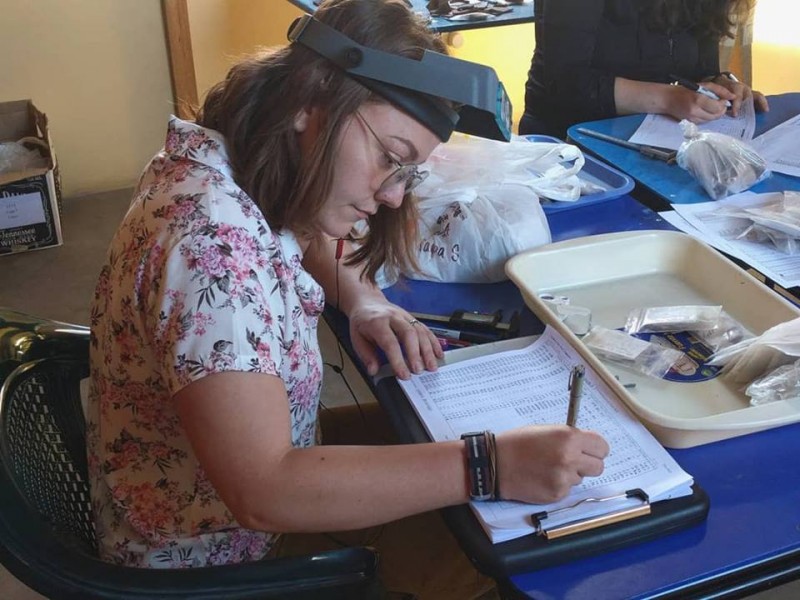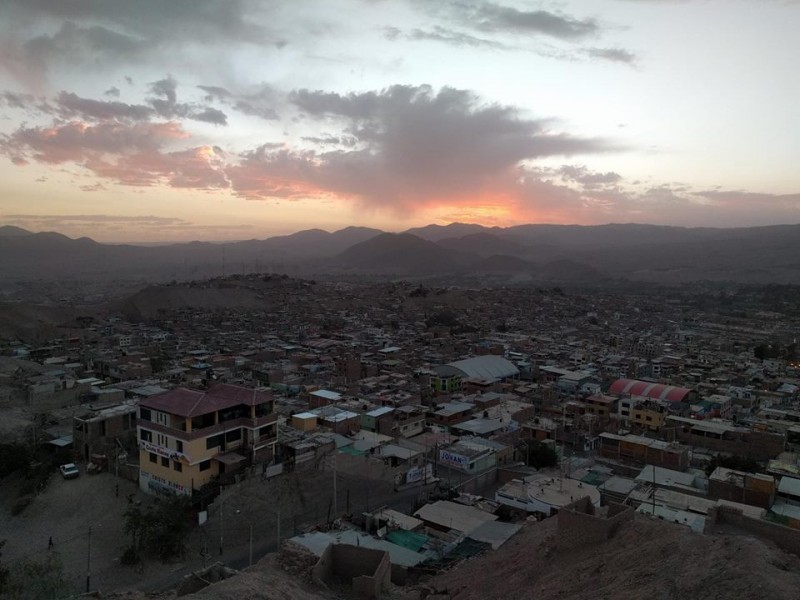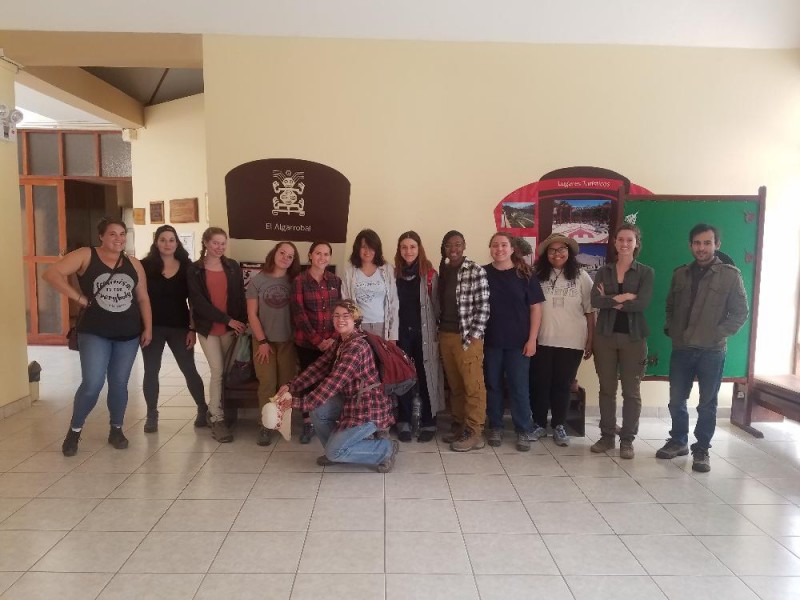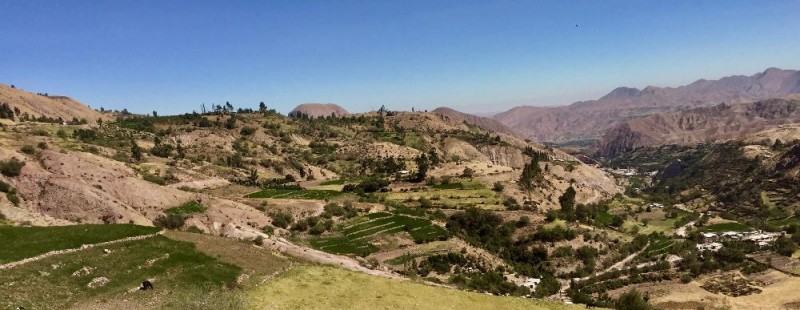Fieldwork
This listing expired on April 30, 2020. Please contact djnash@uncg.edu for any updated information.




Location: Moquegua, PE
Season: June 14, 2020 to July 26, 2020
Session Dates: One session from June 14 to July 26, 2019.
Application Deadline: December 1, 2019
Deadline Type: Exact Date
Website: http://studyabroad.uncg.edu/?go=PeruATY
Program Type:
Field School
RPA Certified:
No
Affiliation:
University of North Carolina at Greensboro
Project Director:
Donna Nash, Ph.D., Associate Professor at University of North Carolina at Greensboro, and Emily Schach, Ph.D. Lecturer at University of California, Santa Cruz
Project Description:
The Contisuyo Archaeological Lab School in Peru will provide students with valuable experience studying abroad and conducting archaeological research. This program provides anthropology and archaeology majors an opportunity to earn 6 credits toward their major in a foreign country. The program gives students laboratory experience in artifact handling, conservation, cataloging and basic analysis of ceramic, lithic, fauna, and textiles, as well as Human Osteology.
Over the course of the summer students will be immersed in research. The primary site for this program is Moquegua, Peru-the capital city of the department of Moquegua. Students will depart the US on June 13, 2020 in order to arrive to Moquegua by June 14. Students will take an international flight from North Carolina to Lima, Peru and then another flight from Lima to Arequipa, Peru. Students will be met at the airport by program staff and be taken by bus to Moquegua, a trip of approximately four hours. In the morning on June 15, they will be given a guided tour of the regional museum, Museo Contisuyo, a class room demonstration regarding the treatment of different types of archaeological materials will start that afternoon.
On Mondays through Friday students will work in the lab from 8:00 AM to Noon (ATY 479). On these days, there will be an hour-long break for lunch. Lab work will resume at 1:00PM and continue until 5:00 PM (ATY 453). Students will have a break of two hours before dinner at 7:00PM. After dinner, students will have additional free time. Free time is provided to allow students an opportunity to read homework articles, study for quizzes, and explore Moquegua. Field trips are scheduled on Saturdays and typically run from 9AM to 3PM. These will be followed by an evening lecture from 5-6PM. No activities are scheduled on Sundays. Students may work on their independent research projects or explore the many monuments in historic Moquegua (all students must get prior approval for any Sunday activity that is not within walking distance of the museum).
Period(s) of Occupation: Middle Horizon, Late Intermediate Period, and Late Horizon (Inka)
Notes:
Archaeological lab school in Moquegua, Peru, where students will gain hands on experience and course credit in artifact analyses and human osteology.
Project Size: 1-24 participants
Minimum Length of Stay for Volunteers: Entire Season
Minimum Age: 18
Experience Required: Prospective program applicants must have an overall GPA of 2.8 with at least one previous course in anthropology or archaeology. Students should be in good health and sufficient physical condition to hike daily for 30 minutes with a day pack. Students will be walking in Moquegua to various laboratories and have weekly field trips that including hiking. Spanish skills are preferred, but not required.
Room and Board Arrangements:
Students will stay in a rented house, which will include a lab area. Housing will be located within a 15-minute walk of the museum (Museo Contisuyo) and the Ministry of Culture, (where some classes are to be held) and downtown restaurants where meals will be offered. Students will walk from the field house to Museo Contisuyo or restaurants for meals.
Breakfast is served family style at the field house and dinner will be eaten at restaurants in Moquegua. The field house will include an archaeological laboratory and living quarters. Students will live dormitory style with 2 to 3 people per room and a shared bath.
Costs are included in the program fee, except for dinner Saturday and lunch Sunday.
Academic Credit:
Students will receive a total of 6 credits for two courses: ATY 479: Analysis of Archaeological Data and ATY 453: Human Osteology. These classes are significant for graduates with an anthropology or archaeology degree that wish to work in Cultural Resource Management or attend graduate school to study archaeology or forensics. Students who do not take such courses will not be competitive in the work place or in the application process to graduate school. Since such experiences are vital to an archaeological career, ATY 479 may be repeated for credit.
Students will participate in laboratory analyses targeted to answer significant anthropological questions. We will be examining materials recovered during a rescue project by professional Peruvian archaeologists. Sadly, they were not allotted the resources to study this large, amazing collection. This research will answer a number of important questions regarding the transitions that took place when Wari and Tiwanaku withdrew from the valley (ca. AD 1000) and later when the Inka conquered the region (ca. AD 1450).
The research associated with ATY 479 will help us to understand changes that took place with regards to the economy (production and exchange) and shifts in religious beliefs and ritual practice (through the styles of artifacts and types of grave inclusions) that took place between (AD 600-1550). Students will gain hands on experience examining pottery, stone tools, animal bones, and other types of artifacts. They will also learn to document archaeological materials through illustrations, photographs, and measurements.
During the ATY 453: Human Osteology portion of the field school, students will learn to identify whole and fragmentary human bones and learn features important to understanding the morphology and structure of skeletal elements. This knowledge will be developed through hands-on experience with an archaeological skeletal collection primarily dating to the Late Intermediate Period and Late Horizon. During osteology laboratory, students will learn and review skeletal elements, while cleaning bones and assisting TAs in skeletal analyses. Students will also have the opportunity to learn how to develop a biological profile based on skeletal remains, focusing on sex determination, age-at-death estimation, and markers of paleopathology.
The AIA is North America's largest and oldest nonprofit organization dedicated to archaeology. The Institute advances awareness, education, fieldwork, preservation, publication, and research of archaeological sites and cultural heritage throughout the world. Your contribution makes a difference.
Notifications